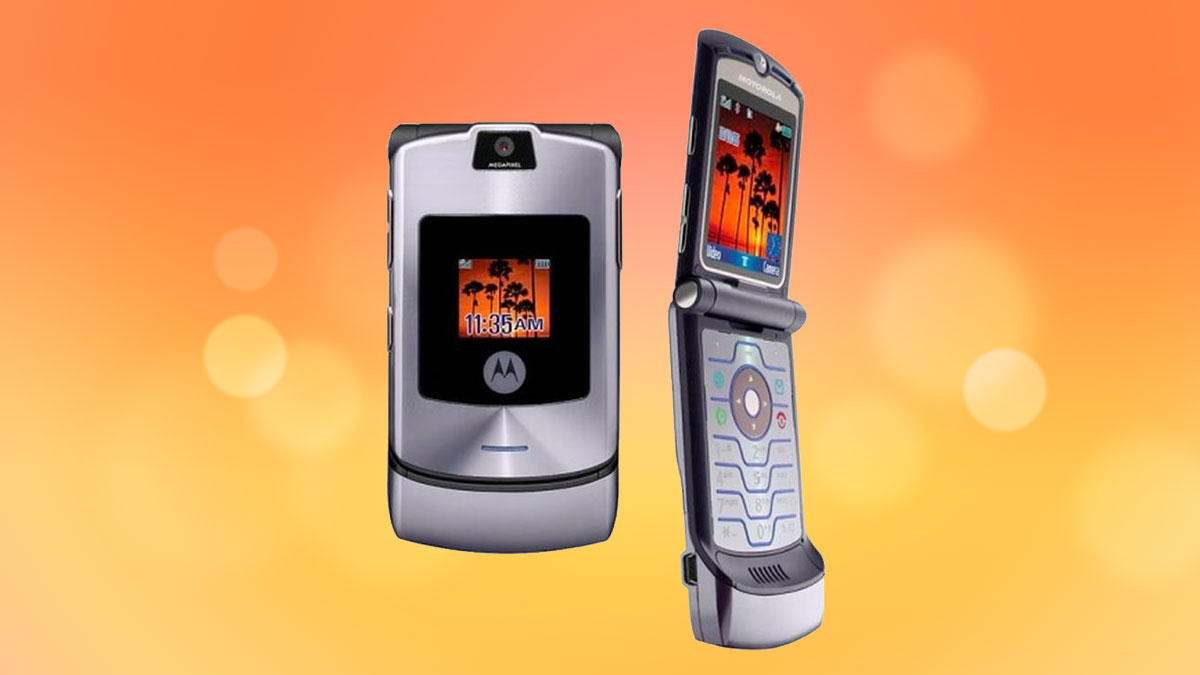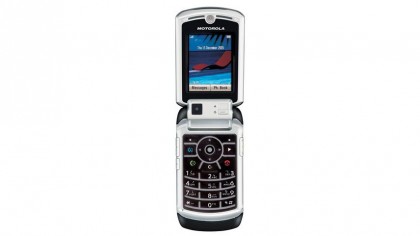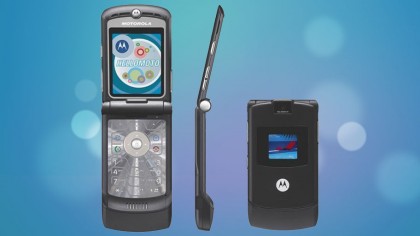Motorola Razr V3: the greatest phone of all time
The modern classic phone that took the 'world's slimmest' crown for many years

Motorola was there at the beginning, introducing the world's first mobile phone - the Motorola 8000x - back in 1983. A symbol of new communication and fast-paced modern business, the 8000x became somewhat of a status symbol, with an eye-watering price of £3,000.
Motorola's highly-successful MicroTAC came to market in 1989 and was the first mobile phone that looked less like a brick, and more like a modern mobile phone, with the StarTac claiming the title of 'world's smallest' phone to date in 1996.
In the late 90s, whilst the rest of the world was switching to GSM, and Nokia was becoming increasingly popular, Motorola made the mistake of sticking to the analogue phones that had made its fortune, and needed something special to put the American giant back on top.
Its most popular handset to date - the Motorola Razr V3 - was that phone, selling over 50 million handsets between 2004 and 2006, and becoming the world's biggest selling clamshell phone in the process.
Not since the aforementioned StarTac, had Motorola pulled off such a trend-setting handset design. The phone was notoriously difficult to get hold of, drawing long lines, quickly selling out, and inspiring a tidal wave of imitations that followed suit, spawning the obsession with slim phones that continues until this day.
After the Razr V3 shot to stardom, Motorola followed it up by painting it in every imaginable colour, and launching a number of upgraded models with additional features and tweaks such as EDGE connectivity in the V3re, and followed up with 3G connectivity and a 2 megapixel camera in the Razr V3x.

It even carried over the super-slim design over to a 'candy-bar' phone (the Slvr) and a 'slider' handset (the Rizr). Neither of these alternatives were quite as popular, and nowhere near as sexy.
Sign up for breaking news, reviews, opinion, top tech deals, and more.
The specifications
Honed from magnesium and aluminium the Razr V3 weighed in at a feather-light 95g, and measured just 98 x 53 x 13.99mm. It was one of the lightest, and by far the skinniest phone of its time, which inspired the razor edge-inspired moniker.
Although it wasn't the first phone to feature dual screens (the Samsung A300 held that accolade), the 96 x 80 pixel display on the outside, and a 2.2-inch 176 x 220 LCD screen on the inside were both colour.
The backlit keypad, d-pad and 6 other buttons were honed from a sheet of aluminium and almost completely flush, which despite a lack of definition was surprisingly tactile, and was especially popular among those fond of typing with the tips of their unusually long fingernails.

Other specifications included a VGA camera, video recording, MP4 video playback and compatibility with MP3 ringtones (though only a measly 5MB of memory was available); a 680mAh battery provided around 250 hours of standby and a talk time of close to 7 hours - not anything great by today's standards, but deemed pretty impressive at the time for such a svelte handset.
The top right edge was home to the volume key, and below that was a dedicated 'smart key' which activated a number of functions with the clamshell closed. On the opposite edge is the 'voice dial' key, which offered some of the hands-free calling abilities you'd expect of Siri or Google Now, now.
Other features included Bluetooth, IMAP and WAP 2.0 internet browsing, as well as the usual host of games and a contact organiser with capacity for 1000 entries.
The price

This was no cut-price handset, back in late 2004 you would have expected to pay the same kind of price that would get you a pretty hot smartphone today - around £500 in today's money.
If you had bought it on contract at launch, then you'd have to pony up £40 a month on Vodafone for years after stumping up £50 upfront... not cheap by comparison to many other - perhaps less desirable - premium phones around at the time.
Like with any smartphone well outside of its product life-span, as new handsets now be found at the bottom of eBay's bargain-big for less than £40 if you shop around, whilst luxurious 'gold' versions can be picked up for around £70.
- 1
- 2
Current page: Motorola Razr V3: the greatest phone of all time
Next Page Competitors, successors and Moto's new kids